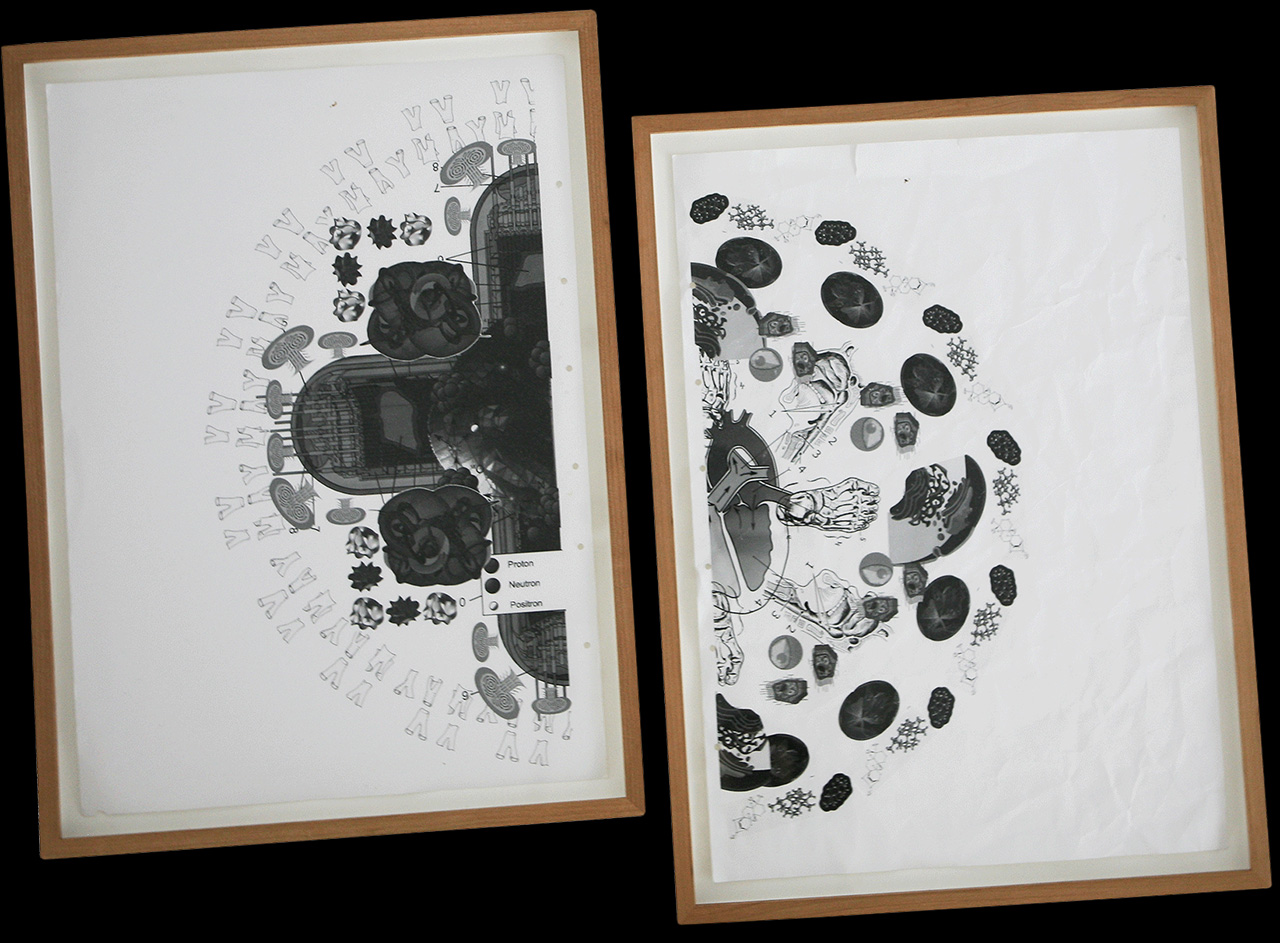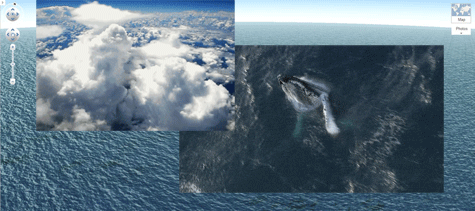INVERSO MUNDUS <TRAILER> - AES+F, 2015
QUANTUM CELL MANDALA - SYLBEE KIM, 2014
LOUNGIN' - EMILY EIFLER, 2013
GOOSE - OKKA-ESTHER HUNGERBÜHLER, 2012
ANIMISTICS - SARA LUDY, 2015
WRATHFUL KING KONG CORE - LU YANG, 2011
Well, the volume="0" no longer seems to work but the code below does:EXAESSENTIALS
AES+F, Emily Eifler, Okka-Esther Hungerbühler, Sylbee Kim, Sara Ludy and Lu Yang
The influence of digital technologies on our perception of nature’s and society’s spiritual character has increased immensely over the past decade.
Besides replacing the importance of physical entities
and the direct experience of nature,
it also opens up opportunities for additional or alternative forms of representation of metaphysical impressions or questions. The featured artistic positions show how
similar the functionalities of digitization and those disembodied powers are, while at the same time discussing the interactions of immanent and transcendental aspects
of our contemporary.
The work <Inverso Mundus> by artist collective AES+F deals with chaos - a world that’s been turned upside down, where power relations have switched and animal mutants are flying gods. The supernatural sceneries are produced in hyper real aesthetics and bring us to a state in between social utopia and apocalyptic organ sounds. The bizarre mixed reality animation by AES+F is followed by <Quantum Cell Mandala> by Sylbee Kim, consisting of two individually framed works on paper. The left half circle assembles figures from quantum physics and superstring theory, while the right one shows cells and organs of flora and fauna. Quantum Cell Mandala uses the geometric structure of Hindu or Buddhist mandalas, which generally show a microcosm of the whole religious universe, and combines it with modern scientific assumptions on the construction of the universe. <Loungin’> is part of a work series by Emily Eifler, where screenshots of a standardized simulation of our world, Google Earth, are equipped with gif-footage of natural phenomenons, such as cloud movements, thunderstorms or hurricanes, sunsets, the starry sky, and in this case a whale splashing into the ocean. By adding digital images that imply an innocently romantic character, Eifler intervenes in the creation of a calculated paradise and returns content which had been rejected or not mapped at all by Google. Revealing these limitations, the work assembles a different scenario of a subjective perception - how a digital reproduction of the world could look like as well. Okka-Esther Hungerbühler’s robot-assisted <Goose> interacts with the viewer, as it follows moving objects with its glance. The simple materials it is made of, such as tape and paper, give it a fragile, sketchy, but yet funny appearance. Still the work bears life in its man-made defectiveness, as it evokes the feeling to be confronted with an autonomous being through the immediate relationship between viewer and sculpture. “Existence” says Hungerbühler, “cuts a comic figure in its imperfection and tragedy.” Sara Ludy’s series <Animistics> evolved as interior pieces in her architecturally inspired project Dream House. These sleek 3D-rendered sculptures remind of microbiological organisms, abstract totem poles or idols. Each one tries to mediate a sort of mysticism of the digital uncanny unknown. The show closes with the video work <Wrathful King Kong Core> by Lu Yang, where the artist mixes Asian cosmology and video game aesthetics of the early 2000s. She applies 3D-animation techniques and knowledge of neurology to display numerous ritual items and various fictive anatomies of one of the "wrathful deities" of Tibetan Buddhism. They are known for their fierce expressions but are regarded as representations of Buddha’s infinite compassion. This seeming contradiction, inherent in all featured positions in the show, is mirrored in the problems of describing metaphysical concepts - or human ascertainability in general - with normative tools and technological extensions.
The work <Inverso Mundus> by artist collective AES+F deals with chaos - a world that’s been turned upside down, where power relations have switched and animal mutants are flying gods. The supernatural sceneries are produced in hyper real aesthetics and bring us to a state in between social utopia and apocalyptic organ sounds. The bizarre mixed reality animation by AES+F is followed by <Quantum Cell Mandala> by Sylbee Kim, consisting of two individually framed works on paper. The left half circle assembles figures from quantum physics and superstring theory, while the right one shows cells and organs of flora and fauna. Quantum Cell Mandala uses the geometric structure of Hindu or Buddhist mandalas, which generally show a microcosm of the whole religious universe, and combines it with modern scientific assumptions on the construction of the universe. <Loungin’> is part of a work series by Emily Eifler, where screenshots of a standardized simulation of our world, Google Earth, are equipped with gif-footage of natural phenomenons, such as cloud movements, thunderstorms or hurricanes, sunsets, the starry sky, and in this case a whale splashing into the ocean. By adding digital images that imply an innocently romantic character, Eifler intervenes in the creation of a calculated paradise and returns content which had been rejected or not mapped at all by Google. Revealing these limitations, the work assembles a different scenario of a subjective perception - how a digital reproduction of the world could look like as well. Okka-Esther Hungerbühler’s robot-assisted <Goose> interacts with the viewer, as it follows moving objects with its glance. The simple materials it is made of, such as tape and paper, give it a fragile, sketchy, but yet funny appearance. Still the work bears life in its man-made defectiveness, as it evokes the feeling to be confronted with an autonomous being through the immediate relationship between viewer and sculpture. “Existence” says Hungerbühler, “cuts a comic figure in its imperfection and tragedy.” Sara Ludy’s series <Animistics> evolved as interior pieces in her architecturally inspired project Dream House. These sleek 3D-rendered sculptures remind of microbiological organisms, abstract totem poles or idols. Each one tries to mediate a sort of mysticism of the digital uncanny unknown. The show closes with the video work <Wrathful King Kong Core> by Lu Yang, where the artist mixes Asian cosmology and video game aesthetics of the early 2000s. She applies 3D-animation techniques and knowledge of neurology to display numerous ritual items and various fictive anatomies of one of the "wrathful deities" of Tibetan Buddhism. They are known for their fierce expressions but are regarded as representations of Buddha’s infinite compassion. This seeming contradiction, inherent in all featured positions in the show, is mirrored in the problems of describing metaphysical concepts - or human ascertainability in general - with normative tools and technological extensions.



